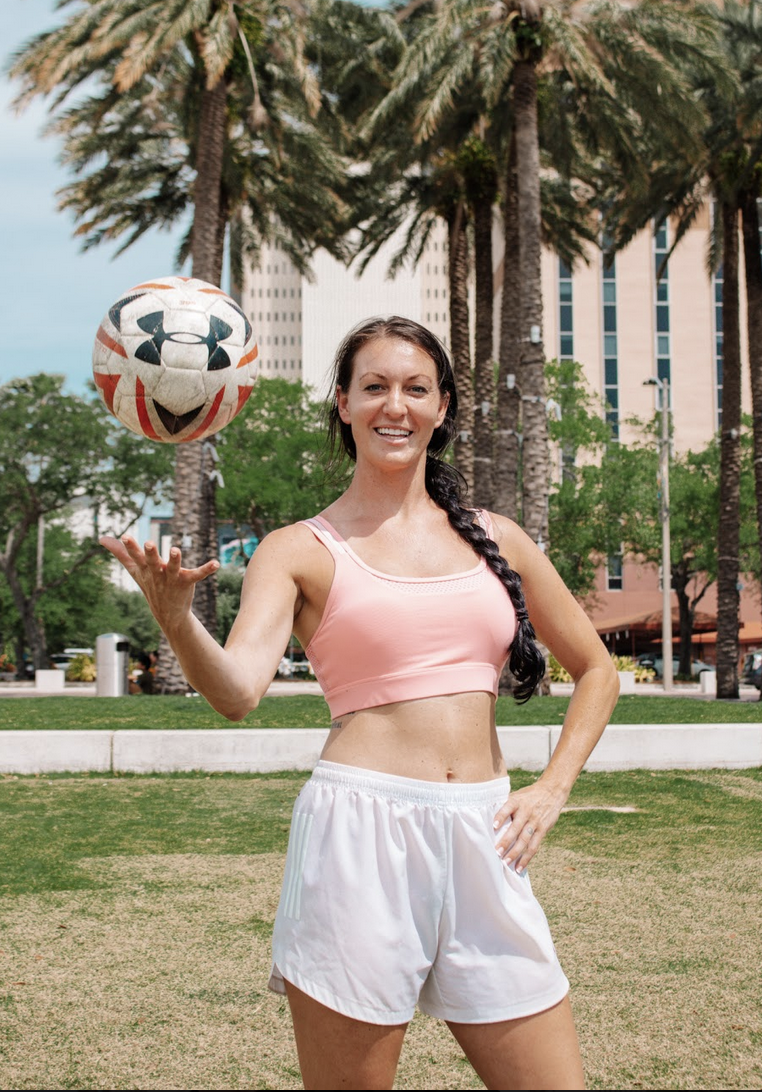
08 Aug How Youth Female Athletes Can Beat the Perfectionist Trap
Chasing perfectionism is a losing game.
It leaves young female athletes feeling defeated and flat, and it’s a pursuit that becomes an unending cycle of frustration. You see, striving to be perfect goes against the human condition as well as the nature of life. It’s hard to go through sports without mistakes. It’s hard to go through life without failure. It’s hard to progress on a linear curve.
The truth is, nothing is linear. It’s not like athletes go from point A to point B without ups and downs, and fighting dragons along the way. I hate to break the bad news, but expect adversity.
What matters most is, however, is how these adversities are handled. Positive pscyholgist Tal Ben-Shahar discusses the differences between a perfectionist an “optimalist.” The perfectionist believes failure means they aren’t talented enough, and most of the time, give up. In the other corner, an optimalist uses failure as the impetus to adapt and level up. For more on an optimalist mindset, I recommend his book Happier.

A lot of young girls are afraid of making mistakes, and I totally get it because they want to fit in, prove themselves, and make their coaches and parents proud. However, they need to be rooted in reality: mistakes are inevitable. They’re going to happen so long as a girl is in sport and living on planet Earth.
Perfectionism is a myth, and I learned this at a young age when I dribbled to my team’s goal and scored an own goal at age 6. I learned this in high school when I missed a State Cup final penalty kick. I learned this in college when I missed a Conference penalty kick. I learned this when I missed several goal scoring opportunities in my semi-pro career.
Mistakes aren’t exclusive to young athletes. Even at the highest level, professionals make mistakes, too. Messi has missed penalty kicks. Alex Morgan hasn’t finished every goal scoring opportunity in the box. Kobe hasn’t made every free throw. There’s solace in knowing that perfectionism is indeed a myth, and no one can make it through sports with a clean slate. All girls are going to make mistakes, face challenges, and have a handful of “oh crap!” moments. It’s the nature of the game.
When it comes to overcoming the perfectionist trap, I look to Stoic philosophy: “A gem cannot be polished without friction,” Seneca says, speaking to the adversity needed to one to level up and become a better version of themselves. To accomplish success, girls must fully immerse themselves in a storm of high and lows because success is never linear. Straight lines are boring, aren’t they? If girls are going through life turning, curving, falling, rising, oscillating, they’re doing themselves a service. Mistakes are learning curves to greater successes, and when big dreams are achieved, it makes the mistakes worth it, in fact, amazing to reflect on.

What kills me about perfectionism is it stagnates female athletes because they’re so frozen with being correct that they don’t act. Imagine a world if everyone waited for the right moment, no risks would be taken. As a result, sports would lack color and vibrancy because no one would ever try to take on a defender, try a sparkling move, go in for a tough tackle, or rocket that shot from half field. With these risks, mistakes will happen, and that is okay. What blocks female athletes from taking risks is the pain that comes along with making a mistake. The truth is, pain is inevitable, in fact needed, to grow. The aversion to pain is what holds girls back and trapped in their perfectionist ways, unaware of their limitless potential.
The aversion to pain is what holds girls back and trapped in their perfectionist ways, unaware of their limitless potential Share on XEveryone wants to go through life pain free and avoid suffering at all costs. The pain, however, is a part of sport and life, so the question is, what do female athletes value that is worth fighting for and experiencing a bit of pain? What is worth working toward even if there are high chances you screw up along the way?

There has to be something so meaningful to them, like getting better at their skills, becoming their strongest selves, or boosting speed, that they have to be okay with the costs that come with these – investment in time, commitment, grueling workouts, and putting the body through challenging feats of strength.
I’m not going to massage this concept and make everyone feel all warm and fuzzy on the inside. Rather, pain is a part of the experience of working toward something meaningful, and if a female athlete wants the benefits of improved performance, she must want the costs, too.
There is no bubble wrapping girls from the pains of sports, otherwise they will become complacent and stagnant. They must want to invest the time, push through hard trainings, overcome high stimulus in the gym, and lean into the pain when they fail. Sports and life are all about cost-benefit analysis, and girls will continue this in business, career and relationships for a lifetime.
Sports and life are all about cost-benefit analysis, and girls will continue this in business, career and relationships for a lifetime Share on XWith any relationship, they’ll have to accept the emotional volatility, and the incredible adventures and feelings of love and joy. With any business venture, they’ll have to accept the risk of investing, and the tremendous return. With any medical career, they’ll have to accept the long hours in the hospital, and feelings of fulfillment of saving lives. The weighing of the costs is unending, but the juxtaposition of the tremendous benefits and feelings of purpose make these costs worth it.
To give some good news, the pain associated with cost is so fleeting that it only lasts for a split second or a few minutes. Okay, maybe longer at times, but just know it comes and goes and isn’t here to stay. Just like clouds in the sky, or a drizzle, or a tumultuous hurricane, it comes and goes. To put things into perspective, pain is so trivial as humans spin around on planet Earth in the middle of a vast galaxy. They’re just a blip in time.
Psychologist Carol Dweck speaks about the “Growth Mindset” in her book as a tool for people to use when pain from failures do happen. People with a growth mindset see failure as an opportunity to learn, view criticism as constructive, see taking risks and trying new things as tools for building competence and confidence, and determine their abilities by their effort and attitude. Mistakes need to be embraced. That’s when the creativity is birthed, and the magic happens.
Moreover, overcoming one mistake at a time raises a female athlete’s confidence threshold and she gains more and more confidence each time she gets a reward from her risk. Pain is a necessary part of athletics, and to avoid injuries, failures, and mistakes without no risk taking, isn’t sport.
What do girls want so bad that they’re willing to accept the mistakes and pain that come along with it?
What do girls want so bad they’re willing to give up perrfectionism and lean into the oscillating process of improvement?
PROGRAMS
Get the TOTAL YOUTH SOCCER FITNESS EBOOK ON SALE FOR JUST $29 HERE
Get a year-round youth speed, strength and conditioning program TOTAL YOUTH SOCCER FITNESS 365 HERE
COACH EDUCATION
For coaching education, a 15 Module video library and in depth Zoom sessions on training the youth female athlete, join my FEMALE ATHELTE FITNESS MENTORSHIP HERE



Shane MCLEAN
Posted at 00:45h, 10 AugustThis is solid gold coach. Love it.
erica
Posted at 12:40h, 17 AugustThank you!!!